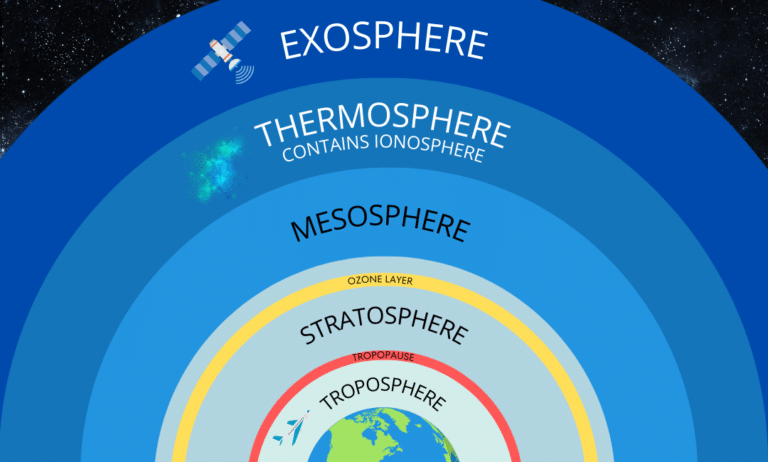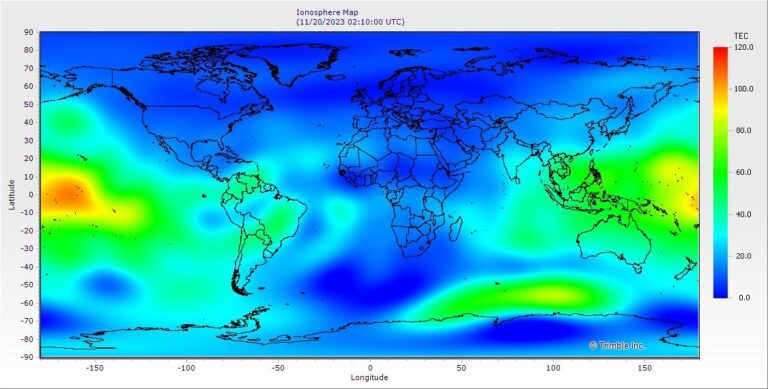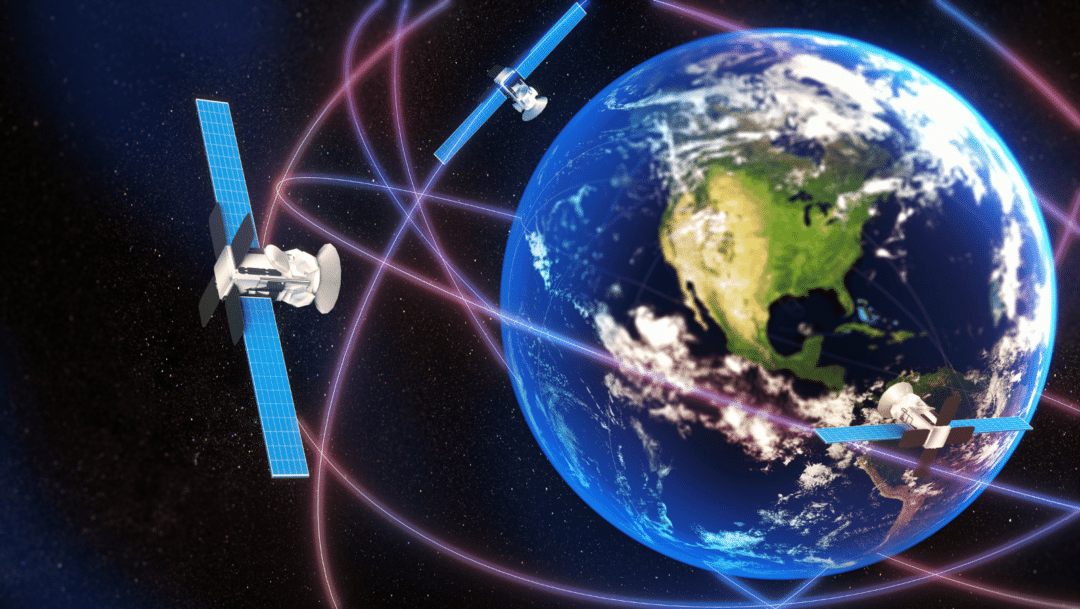Global Navigation Satellite Systems (GNSS), including the widely utilised GPS, have brought about a significant transformation across many diverse industries by utilising the remarkable positioning, navigation, and timing capabilities of the GNSS network.
In agriculture, GNSS applications now play a vital role in the technology used to provide precise field data, high accuracy machine control and intuitive software to facilitate data-driven decision-making and enable accurate predictions of planting outcomes. These systems operate through GNSS receivers, which triangulate signals from satellite constellations, allowing the real-time calculation of coordinates for seamless operational efficiency.
However, the intricate dynamics of the Earth’s upper atmosphere, particularly the ionosphere, introduce a layer of complexity to this technological advancement. The ionosphere possesses the capacity to influence radio waves, interfering with satellite navigation systems that rely on precisely timed signals.
This blog post delves into the intricate relationship between the ionosphere, Solar Cycle 25, and its impact on GNSS technology, with the aim of providing valuable insights into effective mitigation strategies to navigate through potential disruptions and maintain the reliability of precision technologies.
Understanding the ionosphere and its influence:
The ionosphere, an electrically charged layer located between 50 and 650 km above sea level, significantly influences satellite communication. While signals from navigation satellites usually travel without interference, a highly charged ionosphere can introduce delays and distortions through refraction and diffraction.

GNSS receivers can account for smoothly distributed ionised particles using standard models. However, irregularities in the ionosphere, causing fluctuations in the phase and amplitude of GNSS signals, can lead to disturbances such as scintillations near the equator and unpredictable fluctuations in mid-latitude regions.
Solar Cycle 25 and its impacts:
Solar Cycle 25 is the current phase of ionospheric disturbances caused by the sun’s solar flare activity. Solar winds can reach up to 2,500 km/s during geomagnetic storms and up to 200 simultaneous sunspots are possible at the peak of the solar cycle.

The ionosphere undergoes charging through natural processes like the ionisation of gas molecules due to solar ultraviolet radiation and cosmic rays. Solar phenomena, such as flares and coronal mass ejections, have the potential to impact the ionosphere. Additionally, the interactions occurring between solar winds and Earth’s magnetic field, particularly during geomagnetic storms, play a significant role in influencing the ionosphere. During periods of high solar activity, ionospheric disturbances can cause fluctuations in radio waves, resulting in reference station tracking issues, cycle slips, and degraded positioning performance.
Signals from GNSS satellites are disrupted as they pass through the atmosphere, and each day Total Electron Content (TEC) increases. TEC is the total number of electrons present in a path between a radio transmitter and receiver.

Radio waves are affected by the presence of electrons, so the more electrons in the radio wave path, the more the signal will be affected. Expected to peak over the next three years, Solar Cycle 25 poses challenges for technologies relying on high-frequency radio signals, including GNSS signals used for positioning, navigation, and correction services.
Mitigating the impact of ionospheric disturbances:
Understanding the intricate dynamics of the ionosphere and its impact on GNSS technology is essential as Solar Cycle 25 progresses. Mitigating the effects of an ionospheric storm involves proactive planning, utilising tools such as Trimble’s GNSS planning tool, assessing existing hardware, upgrading to newer GNSS receivers, and employing appropriate correction sources. Heightened awareness of ionospheric storms is vital for proactive protection, necessitating a combination of preparedness, resilience, and effective response to address their impact on precision technologies.
To specifically address the impacts of Solar Cycle 25, it is recommended to employ multi-frequency receivers. These receivers effectively counteract ionospheric interference by minimising the effects of total electron content. GNSS planning tools play a critical role in optimising timing around anticipated interference. Trimble’s advanced algorithms further enhance precision positioning, even in the face of solar storms, by continuously and rapidly adjusting correction data.
Trimble are consistently enhancing the performance of their GNSS receivers to meet these challenges and investing in the latest receivers coupled with RTX products will help you mitigate the effects of Solar Cycle 25. We currently have multiple solutions available to assist you in upgrading to technology that will support you throughout Solar Cycle 25.
Implementing these strategies and staying informed about ionospheric storms empower businesses to proactively safeguard their infrastructure and ensure the sustained reliability of precision technologies. Trimble’s advancements in GNSS receivers and algorithms stand as a robust solution for successfully navigating the challenges posed by Solar Cycle 25.
AG-372 Trade-In and Savings Promotion
For a limited time, eligible owners of Case IH and New Holland equipment can save up to 55% when upgrading to the latest Trimble precision technology. To find out more about this amazing offer to upgrade to newer technology and mitigate your risks, click the button below.



